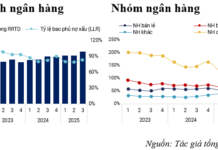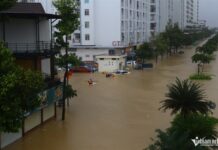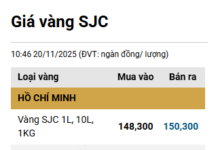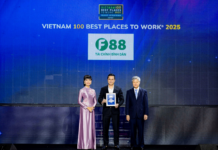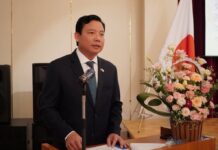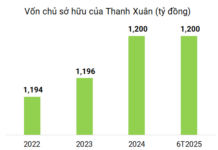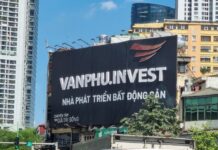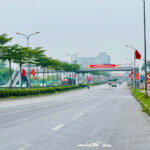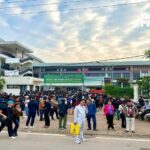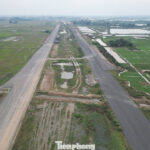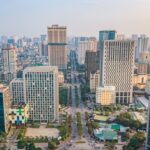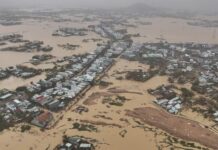
During the conference, Tran Thanh Ha, Chief of the Hanoi Party Committee Office, announced two decisions: the establishment of a Steering Committee and a Support Team. These entities will oversee the implementation of Hanoi’s Capital Planning for the 2021-2030 period, with a vision extending to 2050, and the General Plan for Hanoi Capital until 2045, with a vision to 2065.
According to the decision, Secretary of the City Party Committee Nguyen Duy Ngoc will lead the Steering Committee responsible for implementing the Capital Planning for the 2021-2030 period, with a vision to 2050, and the General Plan for Hanoi Capital until 2045, with a vision to 2065. The committee includes leaders from various ministries, the City Party Committee, People’s Council, People’s Committee, party committees, and relevant departments.
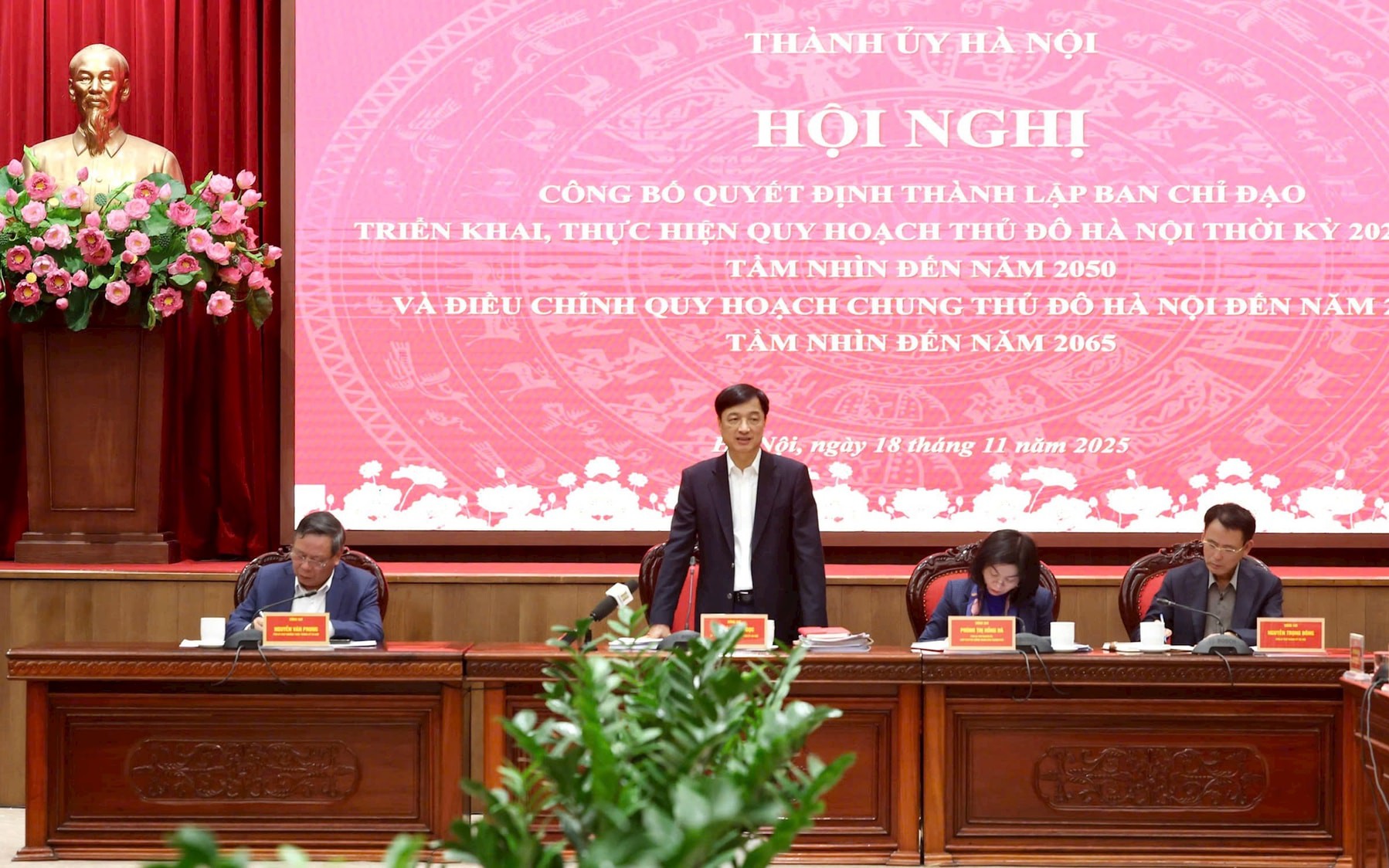
Secretary of the City Party Committee Nguyen Duy Ngoc leads the Steering Committee for the Capital Planning and General Plan. Photo: Hanoi People’s Committee
The Support Team, led by Vice Chairman of the Hanoi People’s Committee Duong Duc Tuan, will be supported by Nguyen Trong Ky Anh, Director of the Department of Planning and Architecture, as the Standing Deputy.
On behalf of the Steering Committee’s Standing Agency, Vice Chairman Duong Duc Tuan reported on the progress of implementing Hanoi’s Capital Planning for the 2021-2030 period, with a vision to 2050, and the General Plan for Hanoi Capital until 2045, with a vision to 2065.
Regarding the implementation of the capital planning, the city has issued an action plan that includes prioritized tasks, development targets, and a list of planning projects with clear timelines for specific actions.
Based on their assigned functions, local authorities and agencies have proactively integrated these goals into annual and phased work programs. They actively advise and coordinate the implementation of solutions and tasks to support the city’s socio-economic development.
For the implementation of the adjusted General Plan for Hanoi Capital, the city has completed various types of planning across its entire area, based on the 2011 General Plan approved by the Prime Minister.
To implement the adjusted General Plan until 2045, with a vision to 2065, the Hanoi People’s Committee has issued the Urban Development Program until 2035 and established regulations for managing the city’s architecture.
After the Ministry of Construction confirmed the adjusted General Plan, and with the implementation of the two-tier local government model, the Hanoi People’s Committee issued a detailed plan. This plan assigns tasks to departments, boards, and district People’s Committees to develop and adjust district, sub-regional, and detailed plans.
The Department of Planning and Architecture will guide units and district People’s Committees in implementing and approving urban and rural planning within their jurisdiction. Some authorities related to planning research will be delegated to these units and district People’s Committees.
Regarding the development of technical infrastructure sectoral plans, the 2011 General Plan approved by the Prime Minister included six technical infrastructure plans: transportation, electricity, water supply, drainage, solid waste management, and cemeteries. The Hanoi People’s Committee has approved the Underground Space Planning for the city center until 2030, with a vision to 2050, and the Planning for Bus Stations, Parking Lots, Logistics Centers, and Rest Stops until 2030, with a vision to 2050.
To implement the adjusted General Plan, the Hanoi People’s Committee has assigned the Department of Construction to lead the development of four plans:
1. Adjusting the overall transportation plan.
2. Adjusting the overall water supply plan.
3. Adjusting the water supply plan and establishing the overall ground elevation for the entire city.
4. Completing the underground space planning based on the approved Underground Space Planning for the city center.
The Department of Agriculture and Rural Development will lead the planning for solid waste management and cemeteries.
Addressing Emerging Issues in Recent Years
According to Vice Chairman Duong Duc Tuan, several issues and new requirements need to be addressed in the adjusted planning, including:
First, there is a lack of consensus on new development solutions for the capital, particularly in addressing persistent issues such as traffic congestion, urban flooding, environmental pollution, green and public spaces, and population distribution.
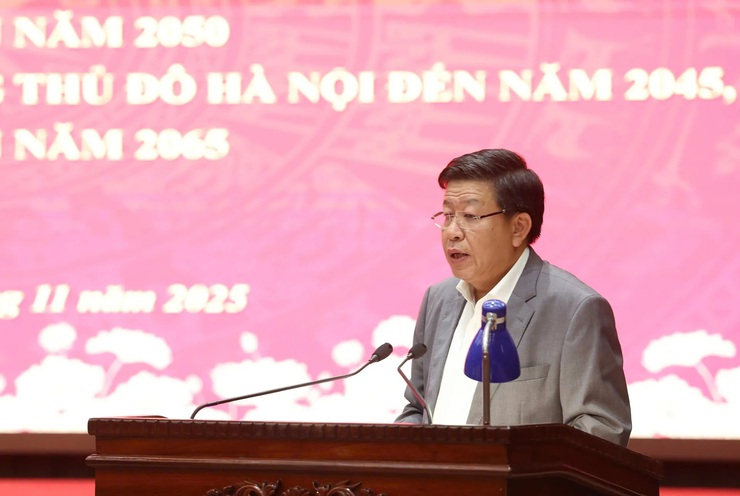
Vice Chairman of the Hanoi People’s Committee Duong Duc Tuan. Photo: Hanoi People’s Committee
Second, new directives, tasks, and requirements have emerged. Recent Central Committee resolutions and National Assembly laws have introduced new content in the current context, impacting the capital’s development direction. The 18th Party Congress Resolution for the 2025-2030 term outlines development breakthroughs, such as perfecting a multi-polar, multi-centered urban model and applying infrastructure-led planning.
Vice Chairman Duong Duc Tuan emphasized that recent emerging issues necessitate adjustments to the General Plan for Hanoi Capital.
Specifically, restructuring and expanding the central urban development boundary, increasing population to support key projects, and addressing the city’s development tasks are essential.
Additionally, strategic projects like the Gia Binh International Airport in Bac Ninh Province will complement Noi Bai Airport, leveraging spatial advantages and infrastructure connectivity to create direct regional linkages.
The Hong River Landscape Axis project, covering approximately 11,000 hectares, will not only enhance urban renewal but also shape Hanoi’s identity as a riverside city and address regional issues.
Furthermore, an international-standard Olympic sports city will be developed, and the satellite city development approach will be adjusted to align with the two-tier government model.
Other changes include national sectoral planning, new policies on underground space management, and infrastructure projects related to urban rail transit development.
Given these new developments, the Capital Planning and General Plan for Hanoi Capital must be reviewed, evaluated, and adjusted to achieve three main goals:
1. Update strategic directives to align with regional and national planning, address existing limitations such as flooding, traffic congestion, and environmental pollution, and enhance infrastructure investment.
2. Clearly define a multi-centered spatial structure, development corridors, ecological zones, and specialized functional areas, while promoting science, technology, and smart city development.
3. Propose suitable investment mechanisms, particularly public-private partnerships, to effectively mobilize resources for key projects.
A Hundred-Year Vision for Hanoi’s Planning
Concluding the conference, Secretary Nguyen Duy Ngoc highlighted Hanoi’s thousand-year history and its ambition for a modern, hundred-year vision. He emphasized the need to leverage Resolution 57-NQ/TW, which focuses on science, technology, innovation, and digital transformation as new development drivers for the capital.
He stressed the importance of completing the two planning documents to identify development potential and allocate resources effectively.
The planning must aim for a hundred-year vision, optimizing development spaces and resources. These plans should serve as a basis for investment, construction, and addressing current planning challenges.
Secretary Nguyen Duy Ngoc instructed the City Party Committee Office to finalize documents to establish the Steering Committee and Support Team, ensuring they begin operations immediately.
He directed the Support Team to promptly implement assigned tasks, clarify responsibilities, timelines, and mechanisms to ensure effective planning implementation.
Hanoi Approves Detailed Planning Scheme for New Urban Area Spanning Over 26 Hectares
The Hanoi People’s Committee has officially approved the detailed planning project for the new G19 Urban Area, at a scale of 1:500. Located within the administrative boundaries of Thien Loc Commune, the planned area spans approximately 26.1 hectares and is designed to accommodate a population of 5,332 residents.
“The Race to Secure Social Housing: A Close Look at the Crowds Competing for Affordable Living at CT3 Kim Chung Project”
On the morning of November 17th, hundreds of residents flocked to the Cultural, Information, and Sports Center of Thien Loc Commune (Hanoi) to submit applications for social housing at the CT3 Kim Chung project.
Up-Close Look: Hanoi’s Ring Road 4 Parallel Roads at Risk of Missing Deadlines
Scheduled for completion by the end of 2025, significant portions of the parallel roads accompanying the Ring Road 4 project in Hanoi remain stalled due to unresolved land clearance issues or are only in the initial stages of foundation excavation and backfilling. The project investor has warned of a high risk that the deadline may not be met.
Unbelievable: Hanoi’s Gateway to Welcome a 3,300+ Hectare “Super City” Linked to Northern Vietnam’s First 5-Star Airport, Projected to House 230,000 Residents
Experience the unprecedented dual momentum as Hanoi simultaneously unlocks a 3,300-hectare mega-urban development in Dong Anh and Phu Dong communes, alongside a direct route to Gia Binh Airport.







